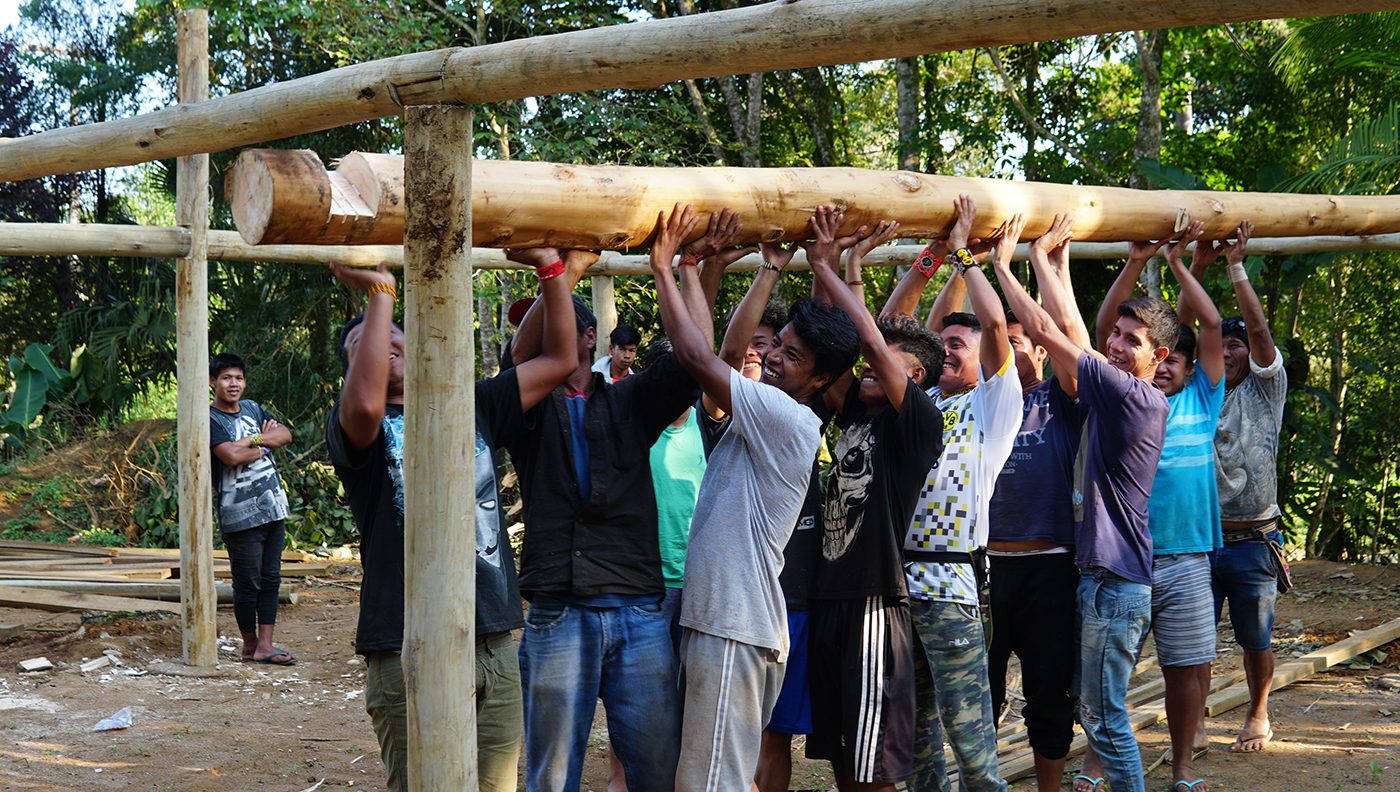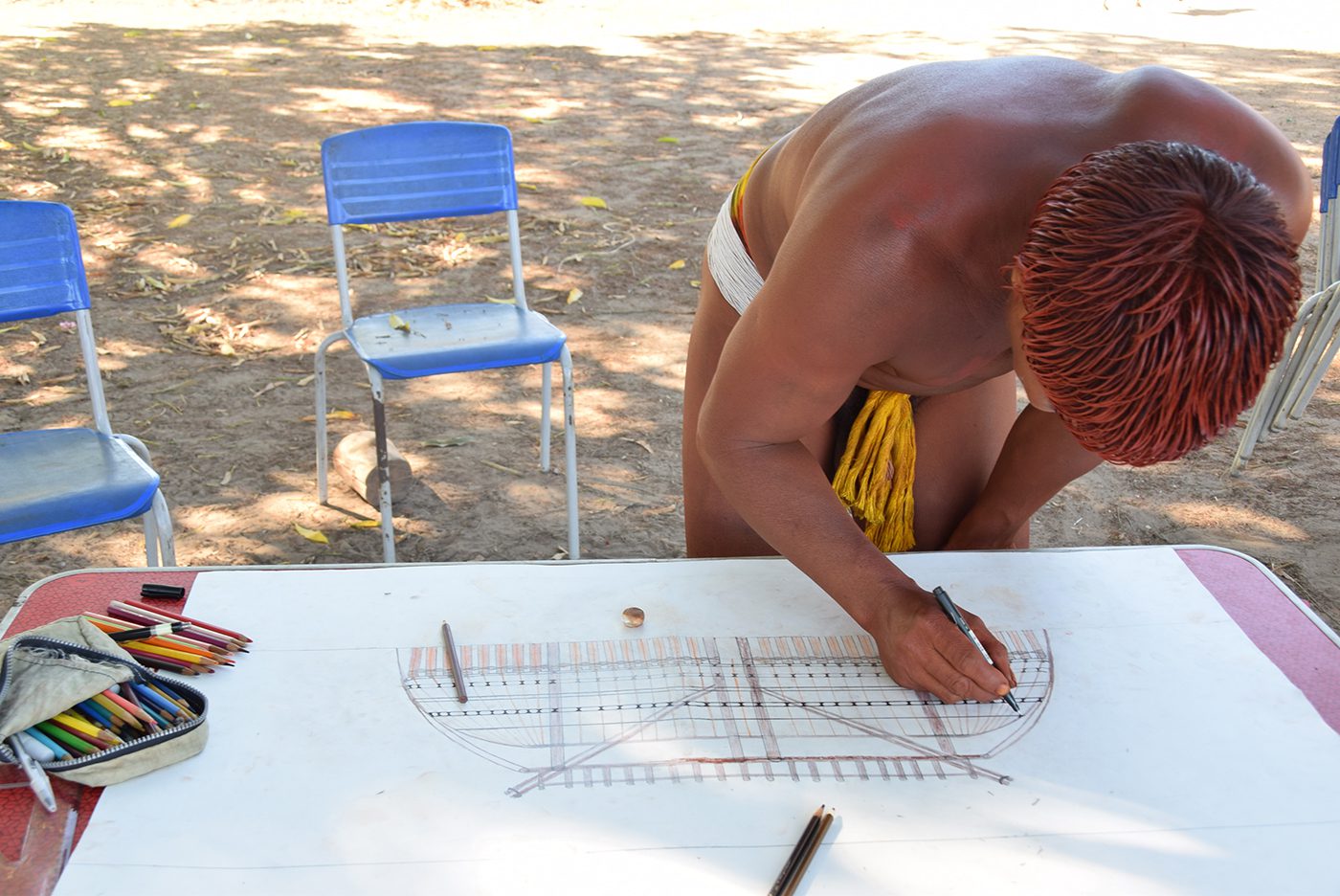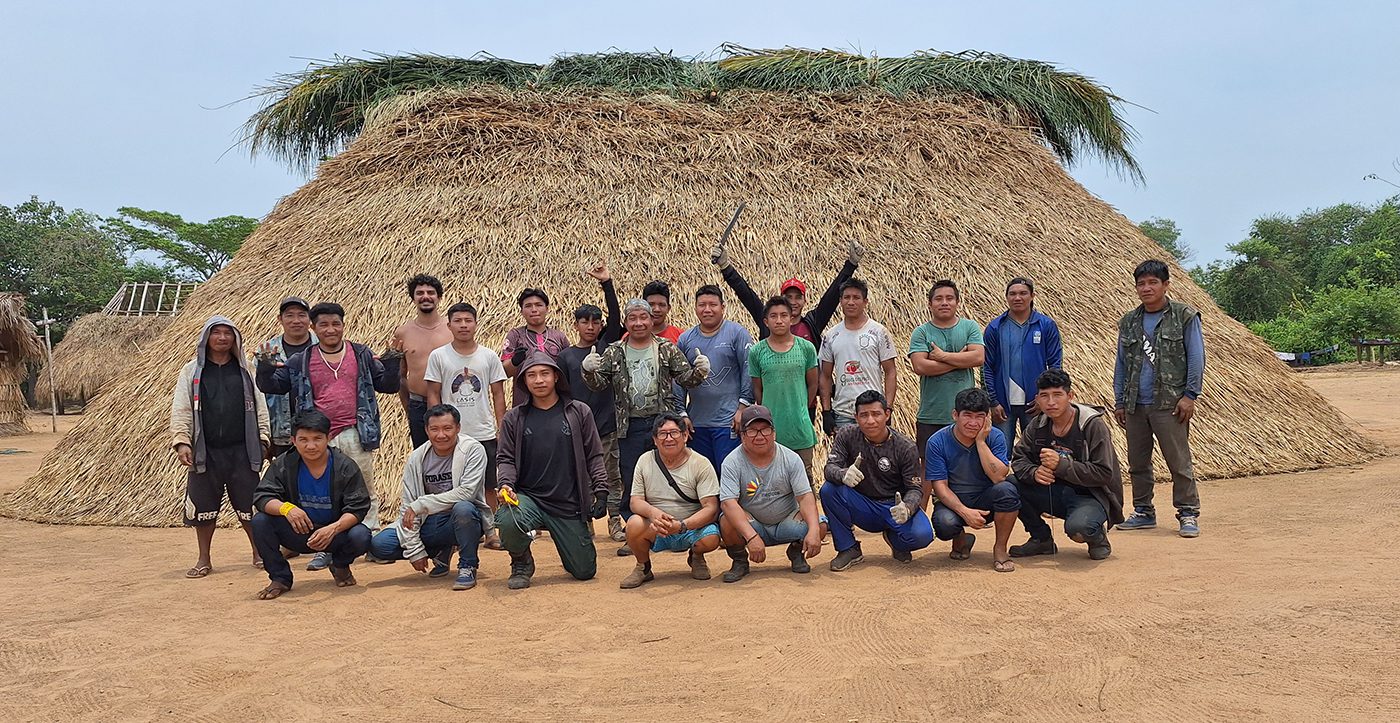Project implementation: Brazil
Project development: Brazil
NHANDEREKO
Simply translated, Nhandereko or Nhanderekó means "way of life of the Guarani people." 'nhande' means "our," and 'reko' means "life," so Nhandereko represents "our life." Nhandereko represents where life is and the relationship of life with all that exists: bodies, space, and the environment. Nhandereko is interconnected with the entire territory, which for the Guarani people represents life, encompassing all living beings: forests, rivers, plants, and animals.
Guarani M'bya Architecture Manual
In 2021, the construction of the new cultural center was documented, and through memories, old photographs, and models, the restoration of what would have been the traditional home of the Guarani-Mbya people in the Tenondé-Porã village in Parelheiros, São Paulo, was documented. Together with builder Joaquim Guarani, leader Jera Poty, and volunteers, materials were collected for the creation of the Guarani-Mbya Architecture Manual. The Guarani-Mbya House is a small, economical structure that truly reflects the Nhandereko, the Guarani "way of life," by positioning itself as the "essentially necessary." Built within the forest, it is also built by the forest, gathering wood and straw available locally and quickly assembled as a shelter that blends into its surroundings, blurring the lines between what is "human" and "natural." Constructed of roundwood, trunks of wood available in the forest, it is roofed with Jussara straw available in the still-preserved territories of São Paulo's Atlantic Forest. The adaptation of materials and construction techniques of traditional houses, whether Guarani or those of another people, from the Xingu to the Upper Rio Negro, is directly connected to the transformations of the forest, many of them resulting from predatory human actions, and the scarcity of traditionally used species. Like much other indigenous knowledge and techniques, construction know-how is intimately linked to the health of the forest, evidencing the symbiotic relationship between "natural and human" and the vital interdependence between them.
Kamayurá Architecture Manual.
As part of the "Ways of Living" workshop-trips, promoted by the Habita-Cidade Platform and the Housing and City Postgraduate Program at Escola da Cidade, a group of teachers and students spent three weeks with the Kamayura people in the Upper Xingu in July 2019, at the Ypawy Village. A partnership between the Kamayura teachers and the Escola da Cidade group led to a survey of the building styles of this sophisticated Xingu ethnic group. Through an initiative by Kamayura leaders and through architect Clara Morgenroth and theater director Cibele Forjaz, a preparatory course for the manual and a workshop-trip were organized with anthropologist Luísa Valentini and architects Anna Julia Dietzsch and Luis Octavio de Faria e Silva (a facilitator for the Habita-Cidade Platform). Named within the scope of the City School of “Ways of Living: Traditional Architectures”, the project resulted in the research and production of the “Kamayurá Architecture Manual” and its annex “The Construction of 'Ok Eté by the Kamayura People”.
Yudja Architecture Manual
The Yudja Architecture Manual was created from the revitalization process of Akatxi, a traditional house of the Yudja people, built communally in 2024, with the guidance of elders, involving young people, women, and children in all stages of the process. The document seeks to record not only the construction techniques—wood selection, straw preparation, and tying methods—but also the ecological knowledge, stories, and symbolic concepts associated with the oral transmission of the Yudja people's traditional house. It is, therefore, a tool for strengthening the memory, autonomy, and continuity of ancestral architectural practices, forming part of a broader network of initiatives that unite Indigenous peoples, architects, artists, and researchers in the preservation and maintenance of traditional knowledge and territories.
The Yudja Architecture Manual is a collective record produced by the Yudja people of the Tuba-Tuba Village (TIX – MT), a project of the Yarikayu Association, in partnership with the Casa Floresta Association, the Socio-Environmental Institute, Xingu Project [UNIFESP], Casa Socio-Environmental Fund, FUNAI and ATIX (Xingu Indigenous Land Association).
Access the manual: https://www.casafloresta.org/manual-da-arquitetura-yudja




